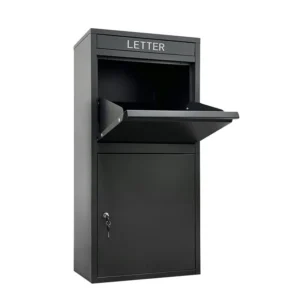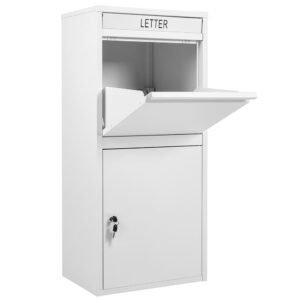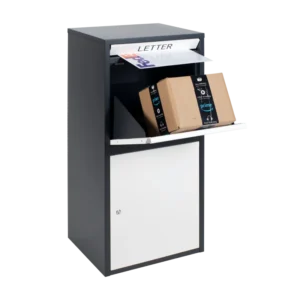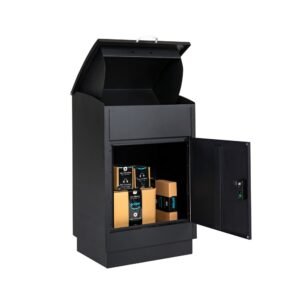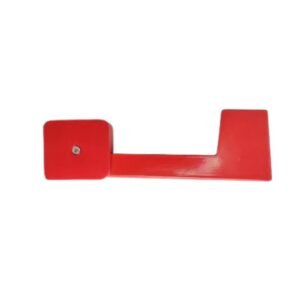Ever wondered what the flag on the mailbox is for? This red flag is not just a decorative touch; it’s a crucial communication tool between you and your mail carrier. When you have outgoing mail, simply raise the flag to signal the postal worker to stop and collect it. Lowered, it indicates there’s no outgoing mail. This article demystifies the small red flag’s purpose, guides you on its correct usage, and explores USPS regulations to ensure smooth postal operations for your home.
Key Takeaways
- The mailbox flag is a critical component for signaling outgoing mail to postal carriers; it is regulated by USPS standards to ensure visibility, with specific requirements on positioning, materials, and colors such as the preferred fluorescent orange for the flag.
- Mailboxes come in various sizes and types, including full service with a flag for both incoming and outgoing mail and limited service for incoming only. Proper selection and maintenance of mailboxes are essential for efficient mail delivery and security.
- For enhanced mail security, especially with sensitive items, use secure drop-off points or digital mail solutions offered by the USPS, which include blue collection boxes and online management systems to safeguard against mail theft and provide real-time tracking.
Understanding the Mailbox Flag

A simple red flag on your mailbox is a silent communicator with your mail carrier. It’s a signaling device that informs postal carriers of outgoing mail that needs to be picked up. When you have letters or parcels to send, all you have to do is raise the flag. The raised mailbox flag then serves as a beacon, indicating that there is outgoing mail inside the mailbox awaiting pickup.
Upon seeing a raised flag, the postal worker, also known as a postal carrier, is obligated to stop and collect the outgoing mail, even if there are no letters or packages to be delivered to that address. This simple yet effective system ensures smooth operation of incoming and outgoing mail, maximizing the efficiency of the postal service.
However, the use of the mailbox flag isn’t uniform across all types of mailboxes. Not all mailboxes, such as limited service mailboxes, are equipped with carrier signal flags. In the following sections, we’ll delve deeper into the specifics of different mailbox types and their flag operation protocols.
The History Behind the Mailbox Flag
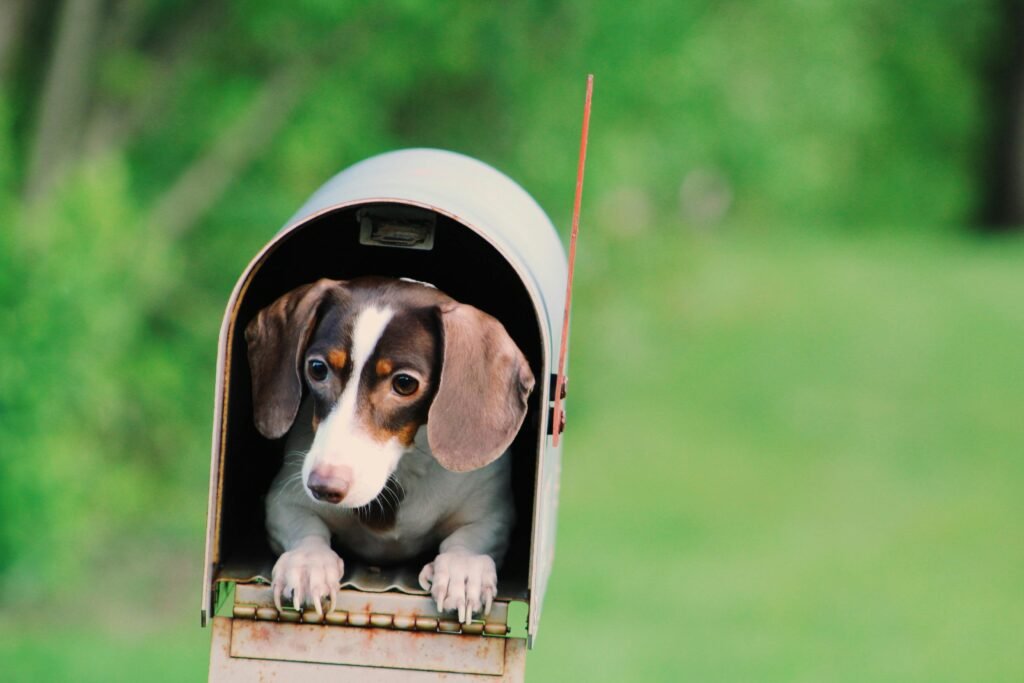
The use of flags as a communication tool dates back to ancient civilizations. Historical records show that various societies, including ancient China and the Roman Empire, used flags and other signals to denote mail delivery. As nation-states emerged around the 1200s, national postal services started to replace independent mail delivery services. France’s establishment of its Royal Postal Service in 1477 and England’s appointment of a master of posts in 1516 exemplify this transition.
In the United States, the mailbox flag served as a notification tool for both outgoing and incoming mail, an innovation particularly welcomed in rural communities. This dual function, coupled with the efficiency of postal services, helped establish the mailbox flag as an integral part of mail delivery.
How to Use Your Mailbox Flag Correctly
Using your mailbox flag is a straightforward process. When you have outgoing mail, simply raise the mailbox flag to alert the mail carrier. This action flags down the postal carrier and indicates that there is mail inside the box that needs to be picked up.
Once the outgoing mail has been collected, or if there is no mail to send out, the flag should be lowered back down. This informs the postal carrier that they don’t need to stop at your mailbox. Keeping the flag down when there’s no outgoing mail ensures the efficiency of mail delivery by saving the postal carrier’s time.
When Not to Use Your Mailbox Flag
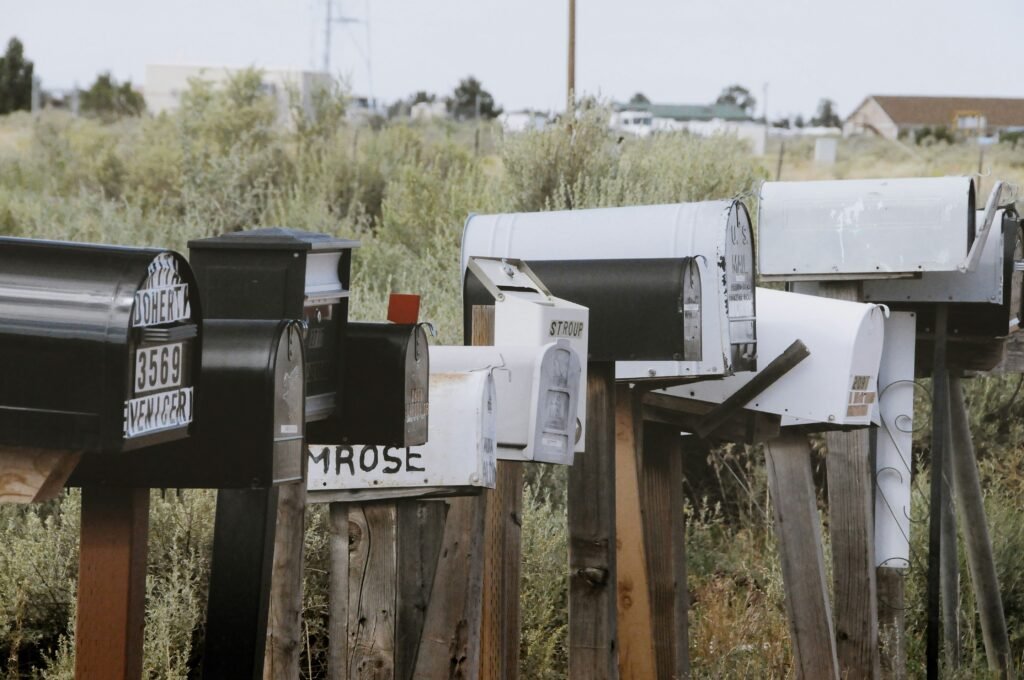
While the mailbox flag is a convenient tool for signaling outgoing mail, there are times when using it may not be the best option. For instance, if your outgoing mail contains checks, bill payments, or sensitive information, using the mailbox flag could potentially expose these items to mail theft.
In such cases, consider using alternatives like a visible cloth hanging out of the mailbox or scheduling a package pick-up with USPS. These alternatives not only provide a secure way to send out mail but also circumvent the need to use the mailbox flag.
USPS Standards for Mailbox Flags
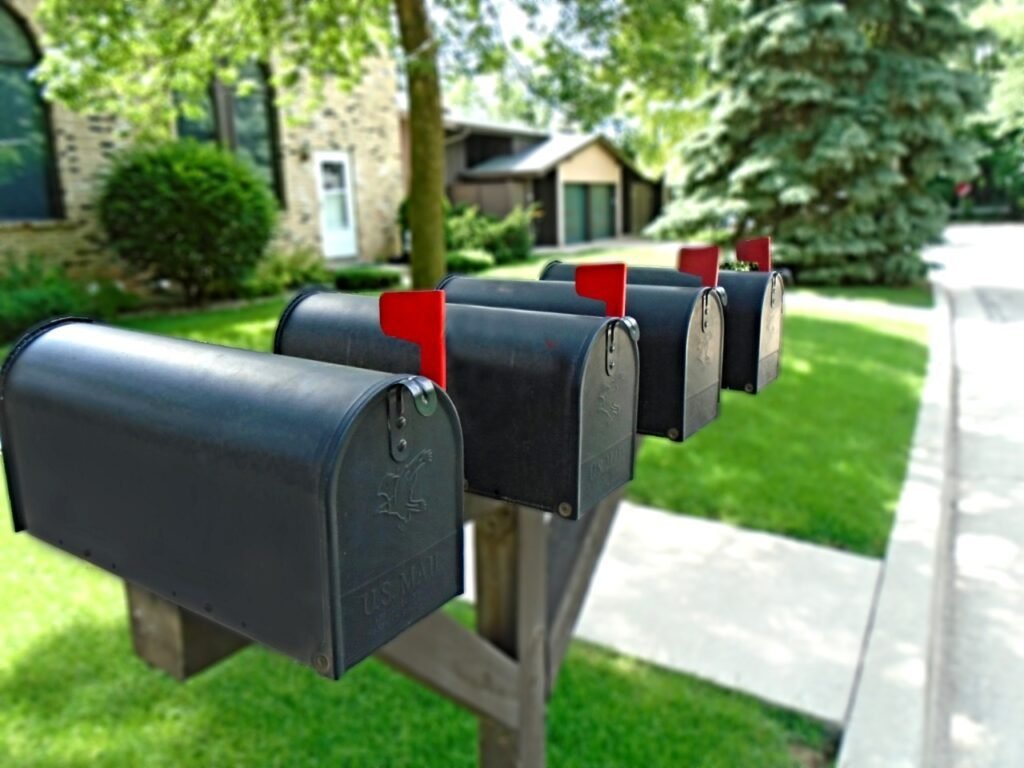
Just like any other component of the postal service, the mailbox flag is governed by specific standards set by the United States Postal Service (USPS). From the flag’s positioning to its materials, colors, and design features, every aspect is regulated to ensure uniformity and efficiency.
According to USPS regulations, the carrier signal flag should be mounted on the right side of the mailbox when viewed from the front. This ensures visibility and accessibility for postal workers. This positioning is based on the standard route of the postal carrier, ensuring that the flag is easily visible and accessible during mail delivery.
The USPS also specifies the materials and colors for carrier signal flags. Plastic is the preferred material due to its durability and resistance to various weather conditions. As for colors, carrier signal flags must be a color other than green, brown, white, yellow, or blue to avoid confusion. Fluorescent orange is the preferred color as it ensures a clear contrast with the mailbox, making it easily noticeable.
Required Positioning and Materials for Flags

The positioning of the carrier signal flag is crucial for its visibility and accessibility. As per USPS STD 7C standards, the carrier signal flag should be mounted on the right side when facing the mailbox from the front. This standard positioning facilitates easy operation for both the mailbox owner and the postal carrier.
The materials used for the carrier signal flag also adhere to specific standards. Plastic is designated as the preferred material due to its durability and resistance to various weather conditions. Additionally, the design of the carrier signal flag must allow for ease of use, requiring no more than 2 pounds of force to deploy or retract.
Acceptable Colors for Visibility and Compliance
The color of the carrier signal flag plays an essential role in its visibility. The USPS recommends fluorescent orange as the preferred color for the carrier signal flag for clear visibility. This vibrant color ensures that the flag stands out, making it easily noticeable by the postal carrier.
However, not all colors are permissible for carrier signal flags. To avoid confusion with natural or common objects, USPS STD 7C standard prohibits the use of any shades of green, brown, white, yellow, or blue for carrier signal flags. But while the carrier signal flag must adhere to color restrictions, USPS allows for any contrasting mailbox color that ensures the flag’s visibility.
Design Features for Reliable Operation
The design of the carrier signal flag is not just about aesthetics; it’s also about functionality. The flag’s operating mechanism is designed for:
- Reliability
- Longevity
- No lubrication required
- Consistent performance even after rigorous testing.
Some mailboxes may feature a self-lowering mechanism for the carrier signal flag. This feature is engineered to automatically lower the flag when the carrier service door is used. However, the carrier door operation should function without requiring extra effort from the postal carrier and should not interfere with mail delivery operations.
Selecting the Right Mailbox for Your Home
-
Package Delivery Box Black
$269.99Original price was: $269.99.$249.99Current price is: $249.99. -
Package Delivery Box Ivory White
$269.99Original price was: $269.99.$249.99Current price is: $249.99. -
Package Delivery Box White
$269.99Original price was: $269.99.$249.99Current price is: $249.99. -
PACKAGE DELIVERY SIGN STICKERS
$19.99Original price was: $19.99.$15.99Current price is: $15.99. -
Pre-Assembled Package Lock Box with Lift-Top
$399.99Original price was: $399.99.$379.99Current price is: $379.99. -
Self Adhesive Mailbox Flag and Mailbox Clip
$29.99Original price was: $29.99.$23.99Current price is: $23.99.
Selecting the right mailbox for your home involves more than just choosing a box that looks good on the curb. You need to consider the size and type of mailbox that best suits your mail volume and needs. Mailboxes come in four general sizes:
- Small mailboxes are ideal for those who regularly check their mail and receive few letters.
- Medium-sized mailboxes can accommodate small packages in addition to regular mail.
- Large mailboxes cater to those with higher mail volumes.
- Extra-large mailboxes are perfect for receiving large packages.
Selecting an appropriately sized mailbox can prevent nuisances or mail damage from occurring.
Before you make a decision, remember to check with your local postmaster if you plan to replace your curbside mailbox with a different type, like a wall-mounted one. Wall-mounted mailboxes should be placed near the main entrance of a residence and must be able to contain a normal day’s volume of mail.
Full Service vs. Limited Service Mailboxes
When choosing a mailbox, you’ll come across two main types: full service and limited service mailboxes. Full-service mailboxes are equipped with a carrier signal flag, allowing for both incoming and outgoing mail handling. These mailboxes offer greater convenience as they eliminate the need for a trip to the post office to send mail.
On the other hand, limited-service mailboxes do not have a carrier signal flag, meaning they are only for incoming mail, and outgoing mail cannot be sent from them. The mailboxes may be suitable for some individuals, but the USPS only mandates carrier signal flags for full-service mailboxes.
Curbside Mailbox Options

Curbside mailboxes are a popular choice among homeowners due to their convenience and versatility. These mailboxes may come with a self-lowering feature for the carrier signal flag, which automatically lowers the flag when the carrier service door is used. This feature facilitates easy operation by the postal carrier and ensures an efficient mail delivery process.
Curbside mailboxes are available in post mount styles that offer a traditional look and ensure carriers can easily access the mail. Some postal service standard mailboxes, like those offered by Mail Boss, come with different methods for indicating outgoing mail, including trays, clips, or bins inside the incoming mail compartment.
Enhancing Mail Security at Your Residence
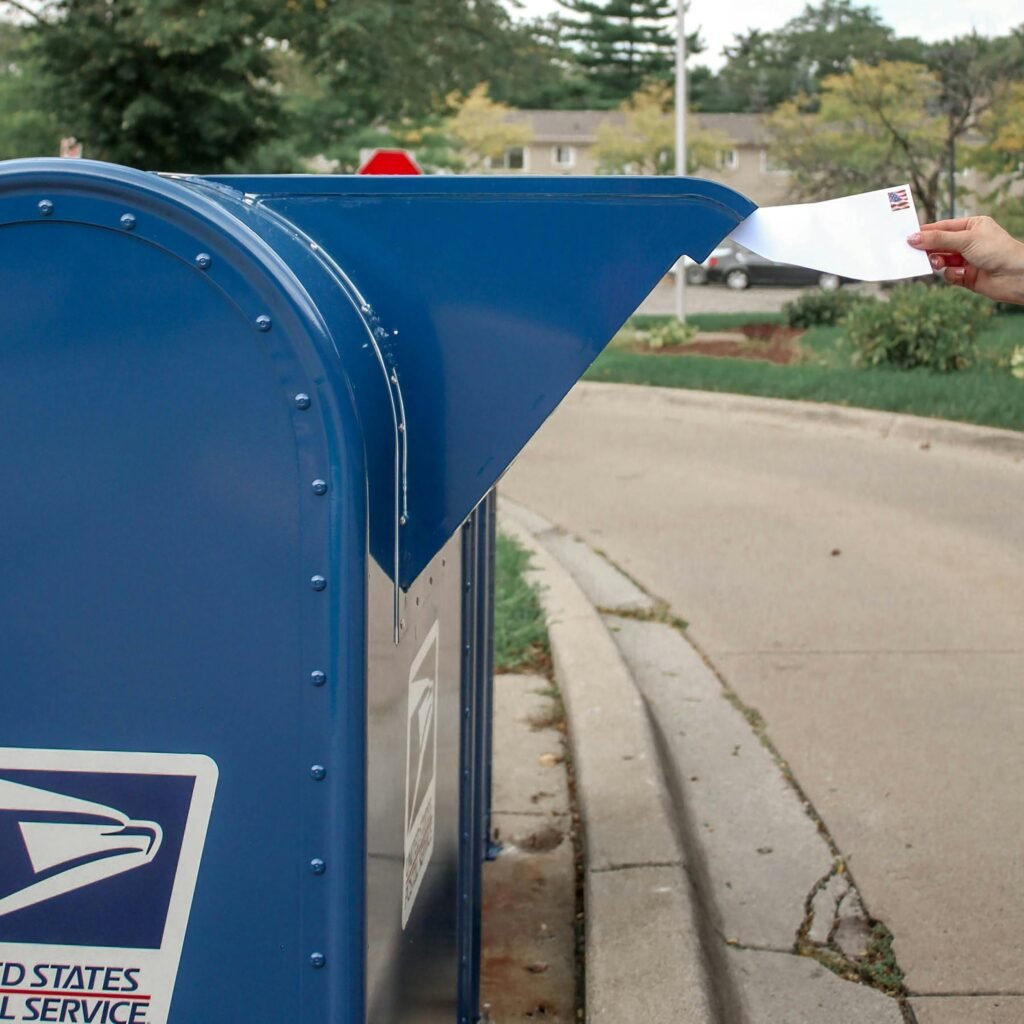
While the mailbox flag is an efficient tool for communicating with your postal carrier, it’s essential to consider the security of your mail. Sending mail from your residence mailbox, especially if it contains checks, bill payments, or sensitive information, could potentially expose these items to mail theft.
To prevent theft and ensure the security of your mail, consider using secure alternatives such as:
- USPS blue collection boxes: secure drop-off points for mail, emptied daily, ensuring timely processing
- Certified mail: provides proof of mailing and delivery, adding an extra layer of security for important documents
- Electronic methods for sending sensitive mail
These options will help protect your mail and give you peace of mind.
In the digital age, technology offers additional solutions for enhanced mail security. Online completion of postage and customs forms, digital mail centers, and real-time tracking systems are some of the digital solutions that can improve mail security and efficiency. The shift to digital mail centers can significantly reduce operational costs by decreasing the need for physical storage and manual mail handling.
Secure Drop-off Points for Outgoing Mail
If you have sensitive mail to send, consider using USPS blue collection mailboxes for a secure drop-off. These blue mailboxes are available across the US and are emptied daily, ensuring timely processing of your mail. The USPS blue drop boxes have pick up times confirmed by a USPS employee no later than 5 PM on weekdays, with times on Saturdays varying based on mail volume.
Alternatively, you can drop off your mail at one of the more than 34,000 post office locations in the United States. These locations are equipped with package drop-off areas where you can leave your shipping labels with USPS for secure processing.
Digital Solutions for Mail Management
In the digital era, managing your mail has never been easier. Online completion of postage and customs forms through USPS.com ensures proper formatting for domestic and international shipments. Digital mail centers automate handling, scanning, capture, and postage payment processes for both inbound and outbound mail, adhering to industry standards.
In addition to automation, digital mail solutions also provide real-time information through advanced tracking systems. Users receive immediate notifications when documents arrive, keeping them updated at all times.
The shift to digital mail centers can significantly reduce operational costs by decreasing the need for physical storage and manual mail handling.
Mailbox Maintenance and Etiquette Tips
Proper maintenance and etiquette are essential for a functioning mailbox. Here are some tips to keep your mailbox in good condition:
- Conduct an annual checkup to address rust or loose parts, tighten hinges, and ensure the mailbox is secure and free from weather-related damage.
- Update faded or chipped paint to enhance your mailbox’s curb appeal.
- Replace missing or faded house numbers to ensure clear identification.
Following these tips will help keep your mailbox in good shape and ensure it functions properly.
For a successful mailbox paint job, follow these steps:
- Clean the mailbox with an all-purpose cleaner.
- Use outdoor-quality paint and primer.
- Remove rust with a wire brush or sandpaper.
- Apply multiple coats of paint, allowing each coat to dry before applying the next.
To protect a freshly painted mailbox post, consider using a Post Shield to prevent damage from weed whackers and other gardening equipment.
Keeping Your Mailbox Accessible and in Good Condition
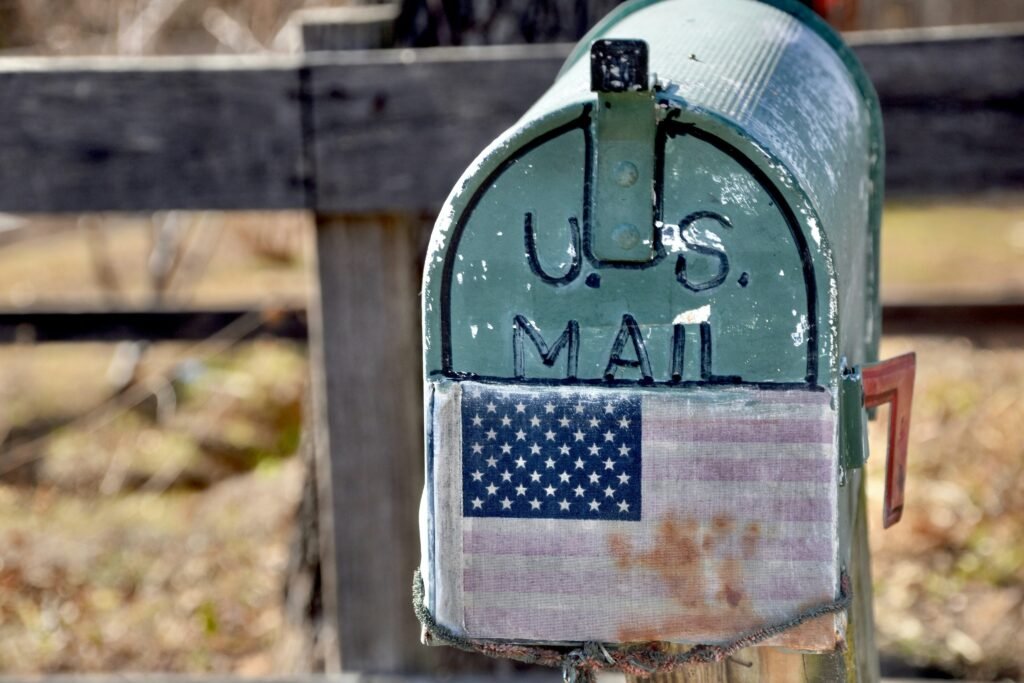
One of the key aspects of mailbox maintenance is ensuring its accessibility. Maintaining a clear area around the mailbox facilitates easy access for mail carriers. Remove any obstacles such as parked cars or overgrown vegetation that can impede a mail carrier’s approach to the mailbox.
Regular maintenance also includes addressing any signs of damage or excessive wear. A mailbox showing signs of such issues should be promptly repaired or replaced to ensure proper use and durability.
Regularly emptying the mailbox prevents overflow, which not only impedes mail delivery but can also signal to thieves that the home may be unattended.
Respecting Mail Delivery Protocols
In addition to maintaining your mailbox, it’s also important to respect mail delivery protocols. Ensuring mail carriers can easily reach the mailbox is crucial for smooth mail delivery service. Avoid parking vehicles in front of your mailbox to prevent access blockage for the mail carrier.
Mailbox decorations should be kept to a minimum to avoid obstructing the view or access to the mailbox by mail carriers. While decorating your mailbox can be a fun way to express your creativity, it’s important to ensure that it does not interfere with the mailbox’s primary function.
Summary
In this blog post, we explored the role of the mailbox flag in the mail delivery process, delving into its history, use, and the standards set by the USPS. We also discussed how to select the right mailbox for your home, how to enhance mail security at your residence, and shared some tips on mailbox maintenance and etiquette. Whether you’re a homeowner looking to install a new mailbox or just interested in learning more about the postal service, we hope this post has provided you with valuable insights.
Frequently Asked Questions
What does flag on mailbox mean?
A flag on a mailbox indicates to the mail carrier that there is outgoing mail to be picked up. Mail carriers will not stop unless the flag is up, as it signals that there is mail to be collected.
Where do you put the flag on a mailbox?
You should place the flag on the right side of the mailbox when facing it from the front. This helps mail carriers easily see if there is outgoing mail.
How do I signal outgoing mail in my mailbox?
To signal outgoing mail in your curbside mailbox, simply raise the red flag to alert your postal carrier. This indicates that you have mail to be picked up.
What are the USPS standards for mailbox flags?
The USPS requires that the carrier signal flag be mounted on the right side of the mailbox when facing it from the front. It should be made of plastic and the preferred color is fluorescent orange.
How do I choose the right mailbox for my home?
To choose the right mailbox for your home, consider your mail volume and needs, and select from sizes such as small, medium, large, and extra-large, while also considering the type of mailbox for outgoing mail.

